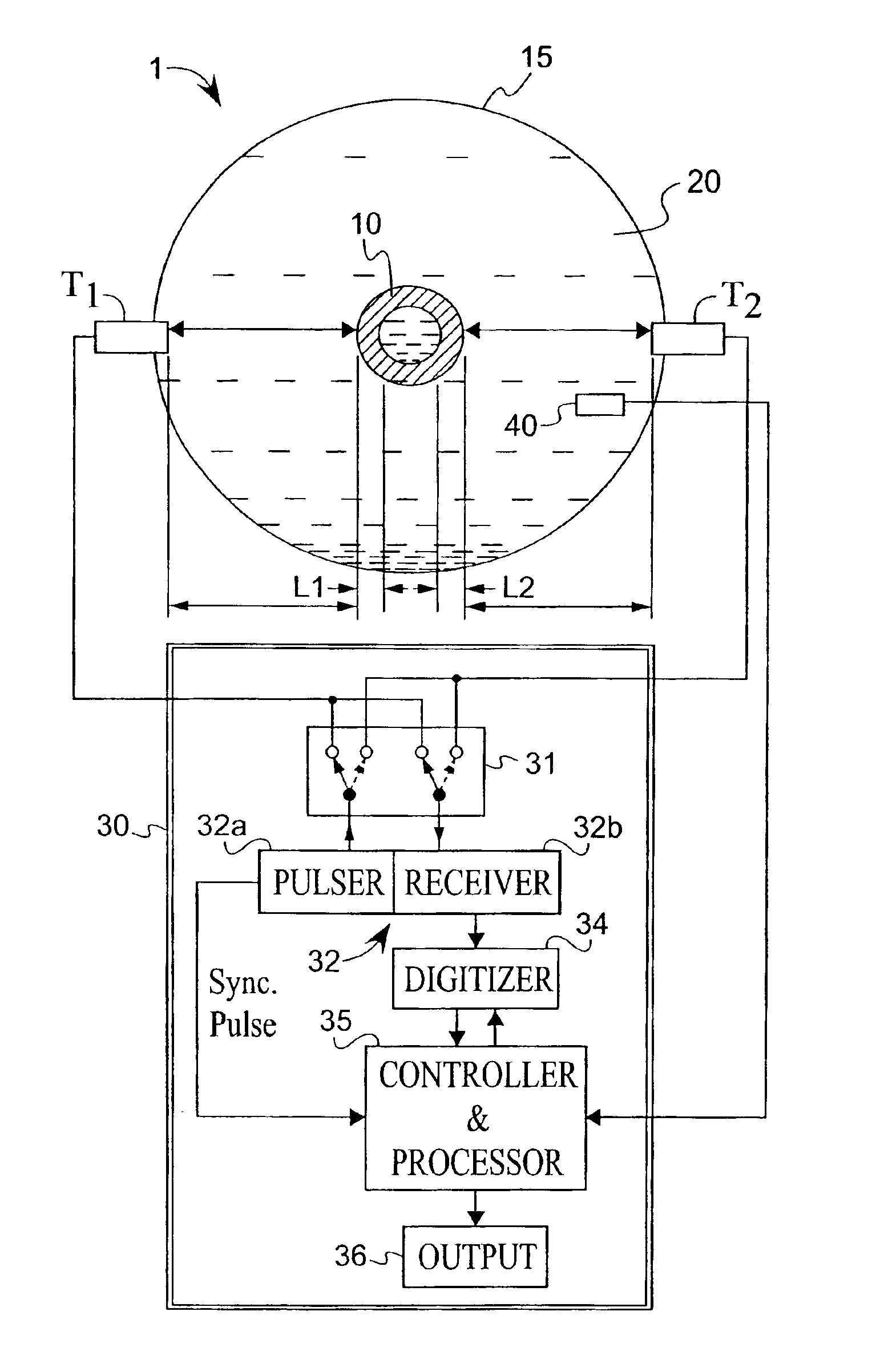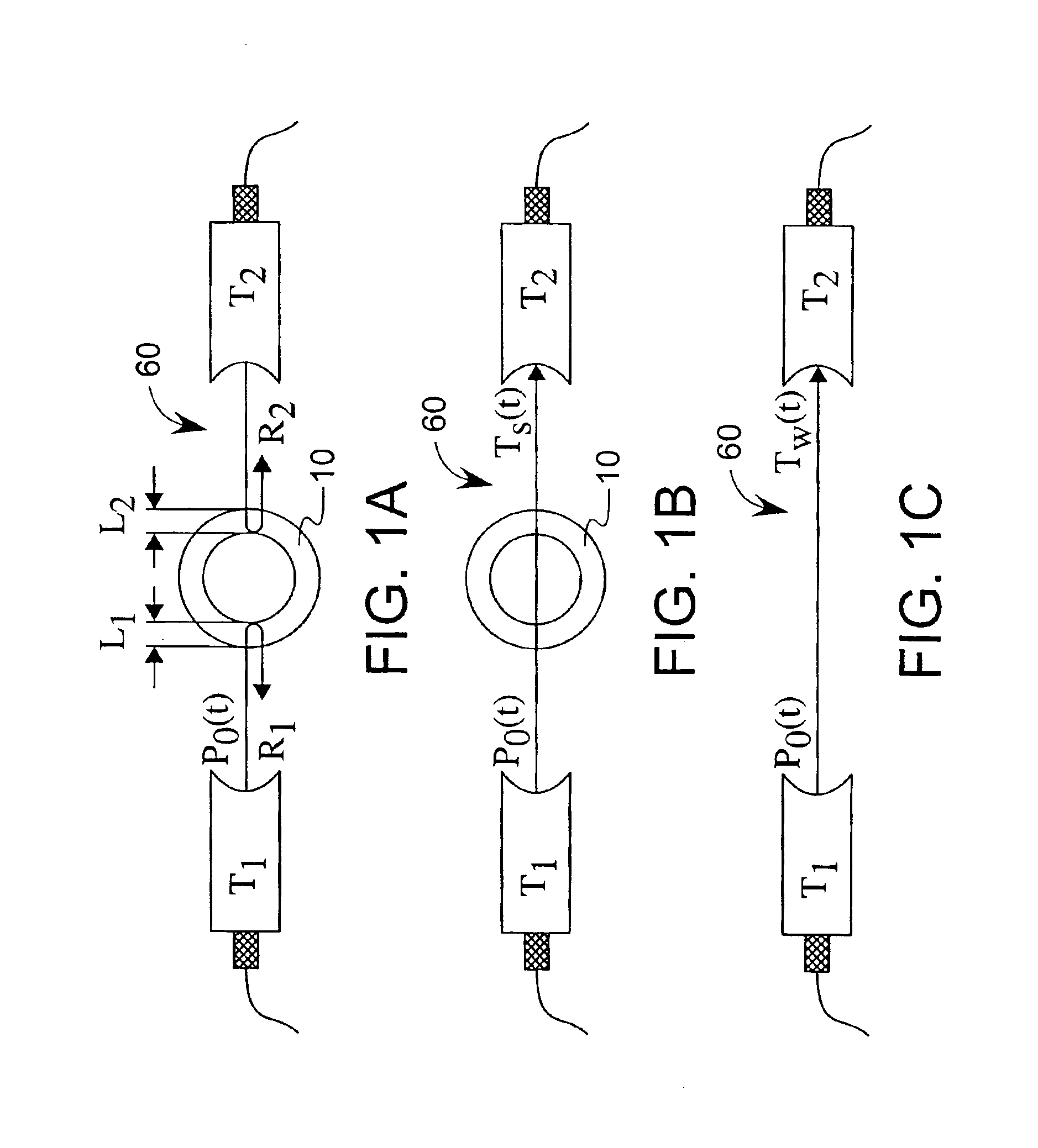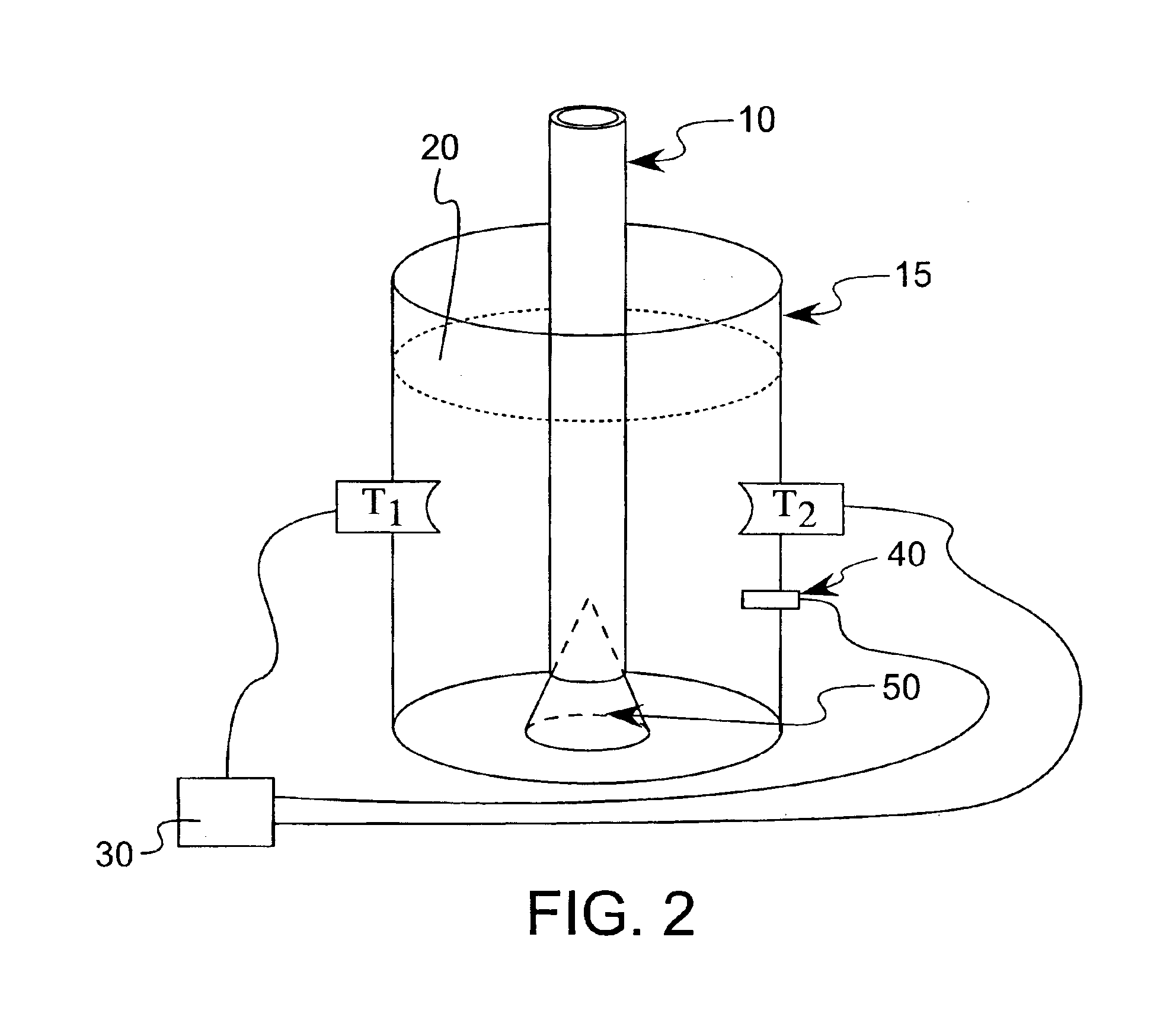Method for determining the wall thickness and the speed of sound in a tube from reflected and transmitted ultrasound pulses
a technology of ultrasound pulses and tube walls, applied in the field of ultrasonic pulses, or waves, can solve the problems of inconvenient or inaccurate tube thickness, and achieve the effects of avoiding calculation errors, enhancing accuracy, and minimizing or abrogating temperature-related errors
- Summary
- Abstract
- Description
- Claims
- Application Information
AI Technical Summary
Benefits of technology
Problems solved by technology
Method used
Image
Examples
Embodiment Construction
[0026]Referring first to FIGS. 1A through 1C, 2 and 5, a set-up for the use of ultrasonic measurement of a tube is shown. In the present context, the term “measurement” and its variants is understood to include ways of sensing or otherwise detecting a particular quantity, such as time or amplitude of ultrasound signals. In such a context, a measurement is a subset of the larger “determining”, wherein quantities are not only measured, but processed or manipulated (such as by calculation or related computation) to produce a human- or machine-useable output. For example, measured time of flight data may be used to calculate, and thereby determine, speed of sound and thickness values. Referring with particularity to FIG. 2, the set-up includes an object to be measured 10 (in this case, a tube), a measurement chamber 15 (such as a vat), an acoustic couplant medium 20 (typically distilled water), measurement and control electronics 30, a temperature sensor 40, an object positioning device...
PUM
 Login to View More
Login to View More Abstract
Description
Claims
Application Information
 Login to View More
Login to View More - R&D
- Intellectual Property
- Life Sciences
- Materials
- Tech Scout
- Unparalleled Data Quality
- Higher Quality Content
- 60% Fewer Hallucinations
Browse by: Latest US Patents, China's latest patents, Technical Efficacy Thesaurus, Application Domain, Technology Topic, Popular Technical Reports.
© 2025 PatSnap. All rights reserved.Legal|Privacy policy|Modern Slavery Act Transparency Statement|Sitemap|About US| Contact US: help@patsnap.com



